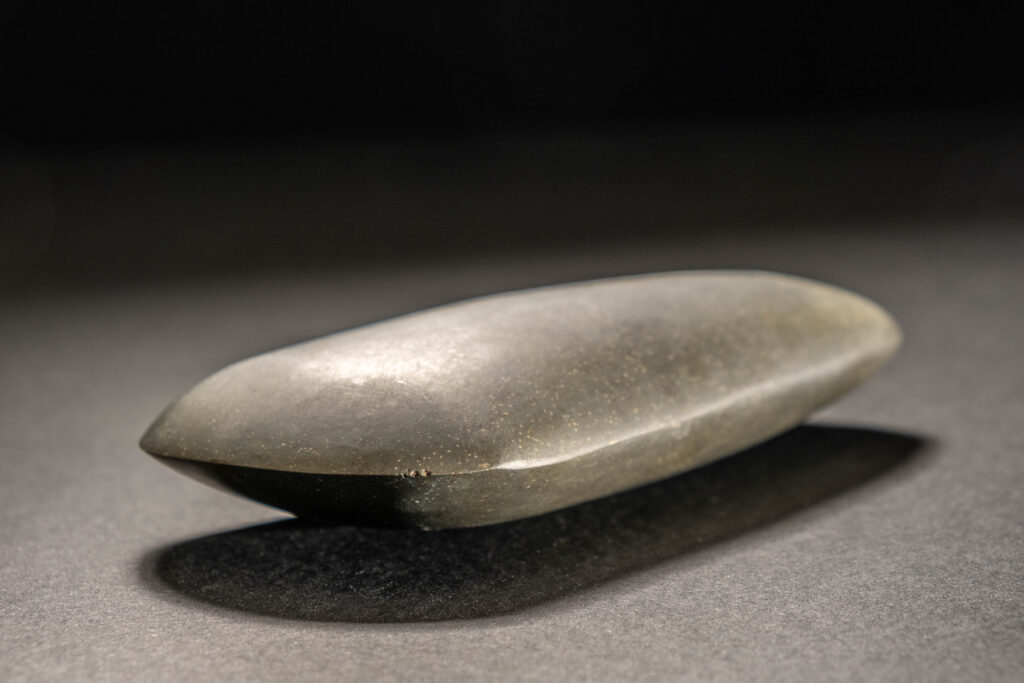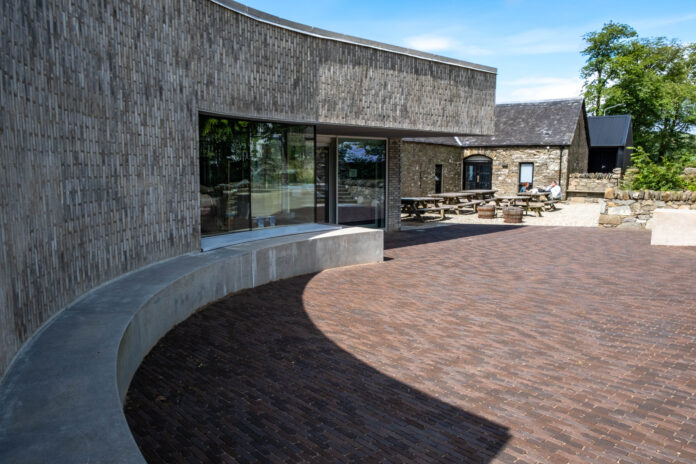A groundbreaking environmental artwork with deep roots in the local history will take centre stage as one of the inaugural exhibits at the revamped Kilmartin Museum, scheduled to reopen in early September.
The Museum’s new exhibition, including artefacts from the Museum’s Nationally Significant Collection of prehistoric artefacts, charts the story of the glen and the wider area across 12,000 years. The museum’s Curators will share fresh insights into one of Europe’s richest prehistoric landscapes. The story of a Neolithic Cursus Monument – and its staggering creation and destruction will feature in the exhibition.
An estimated 375oak trees were cut down and re-erected to form the Kilmartin Cursus Monument. This was then ritualistically burnt, in a bold statement of fire, power and spectacle in Kilmartin Glen 5,500 years ago. The mystery of its creation marked the point where humans started to make their impact on the local landscape, an action that reflects the clearance of the forests to make way for human settlement, monuments and agriculture.

Inspired by the communal effort involved in creating something of the scale of the Cursus Monument, and how it reflects our modern-day need for collective climate action, Rose’s Carbon Legacy asks What were they doing? What were they thinking about and how on earth did they do it?
“It is a stunning, imagined, visual image – followed by the realisation of the number of trees cut down to make it and the human effort involved. How did this change their surroundings and their relationship with the land? And how did their actions change the landscape we live in now.
She added: “I have become intrigued by this monument with reference to how humans have impacted their surroundings both prehistorically and how this affects us today. The burnt wood and charcoal remains immediately made me think of carbon and how important an issue this is to us today. The communal effort involved in creating a monument of such scale resonates with our current need to work collectively to bring about change.
Rose
Carbon Legacy reflects on how our actions implicate our future and the relevancy of this within the human-induced climate crisis we face. It demonstrates the relevancy of studying past human actions, the importance of the legacy we inherit and that which we bestow into the future. Rose makes the point that the present is a fulcrum, the essential moment to enact change – to become good ancestors.
The multi-format exhibition uses sculptural and photographic elements rooted in the history of the local area reflecting the visually bold monumental moment, interpretations of archaeology, contemporary relevance and time. It also involves the exhibition of nearly 400 oak tree seedlings within the museum grounds. The saplings will later be planted in a collaborative action, creating a living monument in Kilmartin Glen near the original monument site. Carbon Legacy is jointly funded by Kilmartin Museum and Creative Scotland.


Lizzie Rose is an artist with strong connections to the Museum’s local area. Born in Oban and having grown up in Argyll before leaving to study Fine Art at Leith School of Art and Newcastle University, she is now back living in the area. Her work draws strongly from the inspiration of the local landscape, as well as themes of environmental justice and conservation. Her recent installation Sea of Change 79 drew from projections of sea level rises by the year 2100 and was displayed locally during the COP26 Environmental Summit in Glasgow in 2021.
Four more local artists were also commissioned to create work in response to the history and natural history of Kilmartin Glen. Their artworks will be displayed as part of the reopening celebrations and have been purchased for the museum’s collections.
Painter Margaret Kerdraws inspiration from ancient rock carvings at nearby Achnabreck, mysterious visual statements that may have been intended to provide creative space for storytelling, ceremony and for spiritual and personal reflection. Textile artist Louise Oppenheimer uses weaving to reflect the inspiring local landscape of Argyll, weaving designs with roots in the inspiring nature and essence of the area. Jae Ferguson is a local artist who has made use of stark clay and charcoal to create intriguing painted work, while Alice Strange is an inventive multi-format artist who has worked in printmaking, painting, mosaic, and weaving, creating striking work that reflects her varied inspirations.


Established in 1997, Kilmartin Museum is one of the key tourist attractions in Argyll and Bute, Scotland, and includes a collection of prehistoric artefacts that have been awarded Nationally Significant status. It is known as the custodian of the archaeological and natural heritage of Kilmartin Glen, one of Scotland’s richest prehistoric landscapes with over 800 historic monuments: cairns, standing stones, stone circles, and rock art dating back over 5000 years. The Museum has been closed for several years, undergoing a major redevelopment which will offer visitors a much larger exhibition space, a creative space that can be used to deliver and participate in cultural activities as well as stage temporary exhibitions, an accessible research and learning facility and fit-for-purpose education space.


